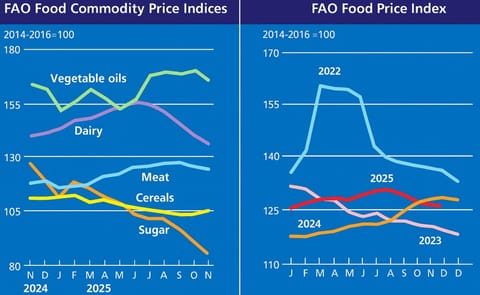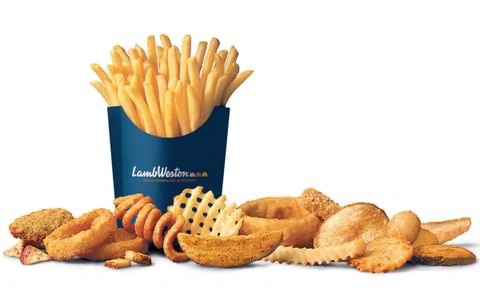First of all I want to compliment Technomic for going all in on their predictions. I think it is quite gutsy to make different predictions for different countries. And what's even better, it gives us something to compare...
Without further ado, here are their predictions:
Trends for the United States Restaurant industry (2012)
- Consumers Seek a Twist on the Familiar: Shell-shocked consumers are in no mood to take risks, but novel flavors still tingle their taste buds. Look for comfort foods with a twist (gourmet, ethnic, artisan, wood-fired) as well as innovation in familiar formats (sandwiches, wraps, pizza, pasta) rather than breakout items taken from less-familiar global cuisines.
- Commodities Costs Drive Rustic Fare Made In-House: Commodity costs are rising, labor costs hold steady and diners demand rustic fare, the simple preparations of fresh ingredients. Result: operators will curtail purchases of value-added items in favor of cheaper cuts, beans, grains and produce that require more back-of-house prep to transform into honest, homestyle food.
- The Next Steps in Local Sourcing: The rising use of seasonal and local items suits the less-is-more culinary trend. To facilitate flexible purchasing, growers, manufacturers, distributors and operators continue to work toward a more transparent, safe and efficient supply chain, streamlining workflow, recording every step and reducing waste.
- Social Networking Influence Accelerates: Consumers increasingly trust friends and peers more than professional marketers. They’re taking control of social media to share their restaurant experiences and opinions with the public (via review sites such as OpenTable), with their own circles (via Facebook and Foursquare) or both (via Twitter). This helps some restaurants rocket to popularity and leaves others quiet.
- Customers Want More Information: Consumers want transparency—looking for disclosure of everything from calories and allergens on menus to labor and local-sourcing practices. A small but growing number are serious about nutrition, labeling, sustainability and community involvement, and they are using such knowledge to make purchasing decisions.
- Operators Try to Resist Discounting: The foodservice industry will continue to operate in a take-share environment, but discounting is cutting to the bone. To counter daily deals and other forms of discounting, operators turn to creative, sometimes in-the-moment, methods to reward their best customers, such as a free dessert out of the blue.
- Brands Expand Through Flexible Formats: Format flexibility is required as restaurants cater to new around-the-clock dayparts, switch gears from fast-casual by day to full-service at night, or transform their kitchens into catering commissaries during slow times. This flexibility is also evidenced in streamlined, high-efficiency smaller-footprint units and brand extensions.
- Revisiting the classics: Limited-service restaurants are tinkering with some of Canadians’ favourite foods, thinking up new variations of classic quick fare such as burgers and pizzas. With “better burger” chains leading the way, more restaurants will find ways to dress up classic Canadian comfort foods with artisan and premium ingredients. We’re primed to see more tricked-out poutines, pizzas with exotic and unexpected toppings, new takes on the classic donair, and new concepts devoted to luxe burgers with lush accompaniments.
- Chefs scale back: While fast-food chains are busy rolling out gourmet and indulgent comfort foods, chefs at full-service and fine-dining restaurants will be wowing diners who want approachable food that’s flavourful yet wholesome, indulgent yet not in a gorge-yourself way. Chefs will be crafting dishes with fewer ingredients, simpler preparation techniques and locally-sourced products. Not only does the scale-back approach allow chefs to showcase the flavours of a small set of carefully chosen ingredients, it also emphasizes the skillful preparation required to take a few simple items and create a culinary masterpiece. Utilizing fewer ingredients will also allow chefs to showcase center-of-the-plate stars like locally-sourced meat and seafood.
- Kids’ menus come of age: The healthfulness of the food that children consume remains a growing concern of parents. Operators will continue finding ways to revamp their kids’ menus to appeal to children and parents alike. Over the next year, more restaurants will update their kids’ menus by adding baked or grilled dishes instead of fried items and replacing high-calorie sides with more healthful options. Chefs will also continue dropping staid children’s fare such as chicken nuggets and hot dogs in favor of more sophisticated dishes better suited to little ones’ budding palates.
- Disposed to disclose: More than ever, restaurant-goers want to know exactly what they’re consuming, from the origin of the beef they’re eating to the exact calorie content of the margarita they’re sipping. This intensifying interest in food and beverage health, coupled with increasing pressure for regulation on menu labeling, means that restaurants will have to start disclosing information about the calories, fat and salt that goes into their food. At the same time, restaurants will continue highlighting their use of local, natural and wholesome ingredients to bolster health perceptions of their food and drink.
- The new tech connection: The rapid emergence of smartphones has opened a new door through which operators can reach their target audience. Today’s consumer gravitates toward what’s quick and easy, and operators have adapted their practices to provide convenient restaurant tools available at the touch of a finger. Apps, social-media pages and daily deals are just the beginning. Look for restaurants to begin adopting more cutting-edge technologies—such as location-based platforms like Foursquare and near-field communication payment services—to develop even deeper connections with their guests.
- Format flexibility: Independents and chains alike are taking their concepts down new avenues to better reach today’s consumer. Convenience is now a critical component in the overall eating-out value equation, and operators will create added convenience with new and innovative dining venues. More operators will embrace new concept models ranging from food trucks and high-tech urban prototypes to fast-casual and scaled-down offshoots of full-service eateries. These flexible venues will help operators immerse themselves in high-traffic areas and bring the concept closer to the consumer.
- The Revival of British Cuisine: The U.K.’s current crop of leading independent chefs is striving to change global perceptions of their national cuisine. The result of their kitchen innovations is the “New British” cuisine, a reworking of traditional British dishes that uses a broader range of ingredients, flavours and preparation techniques. Expect chefs to incorporate more global influences and local ingredients into their dishes in the coming year. The culinary renaissance of British cuisine will help cement London’s reputation as a hot spot for foodies around the world.
- Hyping Up Hyperlocality: British chefs are finding ways to connect to their homeland like never before by using local products, including foraged items, and even growing their own vegetables and herbs in rooftop and onsite gardens. These menu-sourcing practices promote fresh, local and seasonal items in dishes. As local and seasonal items become more in-demand, expect more chefs to explore the benefits of house-grown or foraged ingredients in menu development.
- Global Cuisines Diversify Menus: The Mexican segment has expanded in the U.K. over the past few years, opening the door for other global cuisines to tempt British palates. Following Restaurant magazine's naming of Copenhagen's Noma restaurant as the world's best for the past two years, British interest in Scandinavian cuisine is on the rise. Also, street foods such as Chinese dumplings and Mexican empanadas are creating buzz among chefs, providing an inexpensive and creative way to explore new flavours and dishes.
- iTrend--Technology Reshapes Patrons’ Dining Experience: Technology has already transformed the way operators correspond with customers, and now it is poised to change their restaurant service and atmosphere. Operators who incorporate leading technologies into their service model—such as providing iPods with music or replacing waiters with electronic ordering devices—will propel themselves ahead of their competitors by creating unique, unforgettable away-from-home meals.
- Restaurants Race into Retail: Consumers are still saving their earnings for the unpredictable economic climate ahead. To keep sales afloat, many restaurant operators will turn to the retail sector for new revenue streams. Look for an influx of take-home meals from both chain and independent restaurant brands in a variety of retail establishments. These value-driven meals could help offset lagging restaurant sales while preserving pounds in patrons’ pockets.
- The Lure of Emerging Markets: Due to escalating operating costs and slower traffic in the U.K., some operators have tightened the reins on domestic expansion. Such economic hardships are causing many U.K. operators to explore emerging international markets for new store development. Look for a push into Brazil, Russia, India, China and the Middle East by U.K.-based operators. These booming global economies offer U.K. operators a relatively untapped foodservice landscape with fewer competitors, lower operating costs and a large consumer base eager for internationally branded restaurant options.










